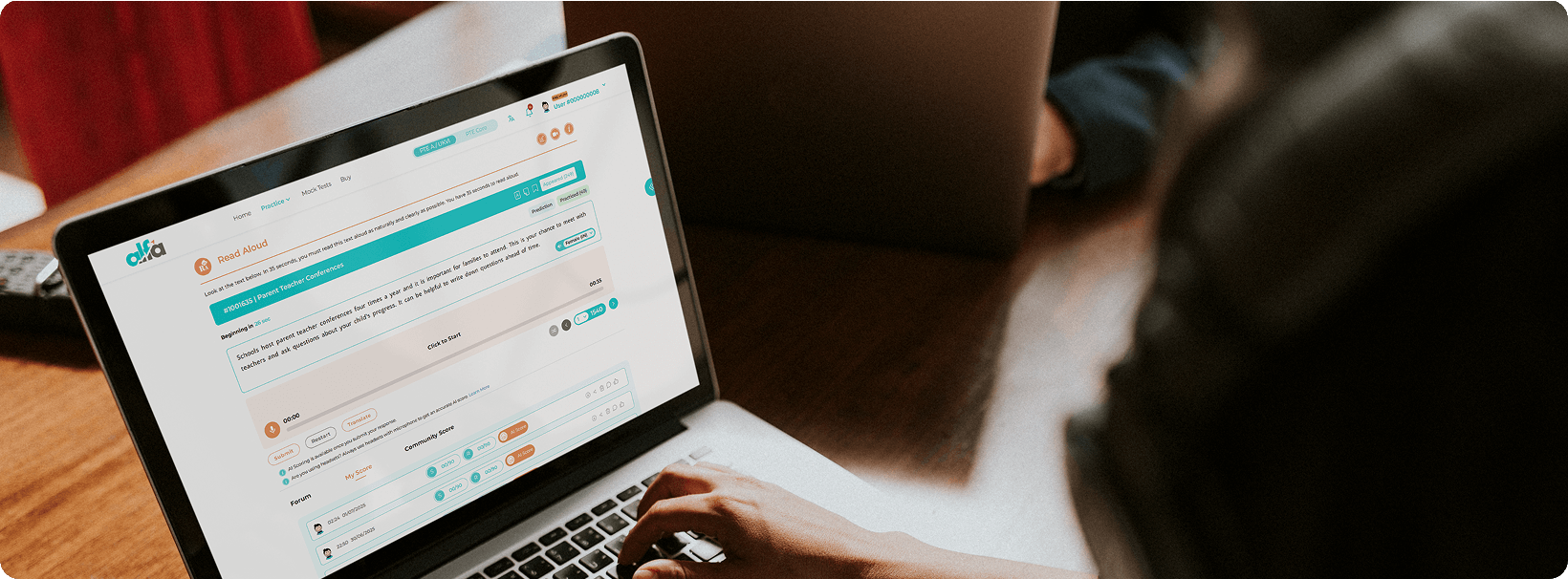A paragraph will be present on the screen, which you have to read with proper pronunciation while maintaining the sentence flow in a natural way. In the provided time of 40 seconds, you have to complete your paragraph reading.
You will be provided with a maximum of 35 seconds to go through the provided paragraph before the recording starts.
Once recording begins, you can see the countdown timer that shows how much time is left for your microphone to get turned on. Once the timer ends, a short beep can be heard. You must begin talking after the beep. Avoid speaking before the microphone gets turned on, as the device will not record your audio.
- You should not hurry while you are speaking.
- Once you have finished speaking, please submit your answer.
- If you do not stop even after the timer ends, the answer will be submitted automatically. Stop recording once the timer stops. Status “Recording” will now change to “Completed.”
- Answers can be recorded only once.
Provided below are a few sample questions for you to understand & prepare:
PTE Read Aloud Samples
Sample Question 1:
Beginning in 35 sec
In the creative condition, the students were told to think of a friend who did something special and think of them as their "creative friend" who could help them solve any problem. This type of creativity training is called perspective shifting, in which the kids look at a problem through the eyes of someone else.
Sample Question 2:
Beginning in 35 sec
The Second Plague Pandemic of the mid 14th century, also known as the Black Death, killed 30 to 60% of the European population and profoundly changed the course of European history. New research suggests that this plague, potentially through resulting changes in diet and hygiene, may also be associated with a shift in the composition of the human oral microbiome toward one that contributes to chronic diseases in modern day humans.
Sample Question 3:
Beginning in 35 sec
There are three main interpretations of the English Revolution. The longest lasting interpretation was that the Revolution was an almost inevitable outcome of an age old power struggle between parliament and crown. The second sees it as a class struggle, and a lead up to the French and other revolutions. Finally, the third interpretation sees the other two as too fixed, not allowing for unpredictability, and that the outcome could have gone either way.
Sample Question 4:
Beginning in 35 sec
Increasing concentrations of greenhouse gases in the atmosphere from human activity traps heat within the climate system, warming air, the land surface, the oceans, and melting polar ice. Oceans do by far the most work, absorbing more than 90% of the excess human generated heat accumulated in the Earth's climate system, moderating atmospheric temperature rises.
Sample Question 5:
Beginning in 35 sec
The correlation between elevated blood pressure levels and a multitude of health complications is widely acknowledged. However, recent studies have shed light on an equally concerning aspect. Researchers have discovered that these fluctuations in blood pressure can not only be detrimental to overall health but also act as a potential precursor to the development of dementia and vascular disease.
Sample Question 6:
Beginning in 35 sec
Contrary to the commonly held view, the brain does not have the ability to rewire itself to compensate for the loss of sight, an amputation or stroke, for example, say scientists. The researchers argue that the notion that the brain, in response to injury or deficit, can reorganize itself and repurpose particular regions for new functions, is fundamentally flawed -- despite being commonly cited in scientific textbooks.
Sample Question 7:
Beginning in 35 sec
3D printing is advancing rapidly, and the range of materials that can be used has expanded considerably. While the technology was previously limited to fast curing plastics, it has now been made suitable for slow curing plastics as well. These have decisive advantages as they have enhanced elastic properties and are more durable and robust.
Sample Question 8:
Beginning in 35 sec
Normally, heat is what gets evaporation going, causing water molecules in the liquid to jostle more vigorously. That extra energy can break some of the bonds between molecules in the liquid, allowing molecules to escape as water vapour. Based on how much heat goes in, scientists can calculate the amount of evaporation expected.
Sample Question 9:
Beginning in 35 sec
Climate change, deforestation, pollution, and overexploitation of natural resources are some of the major threats facing the natural environment. Addressing these challenges requires a comprehensive understanding of the complex interactions between humans and the natural environment, as well as a commitment to sustainable development and responsible environmental stewardship.
Sample Question 10:
Beginning in 35 sec
Why do we dream? A product of our brain's neurophysiology, dreaming is a complex experience that can take on many emotional tones and simulate reality to varying degrees. As a result, there is still no clear answer to this question. A study compared the dreams of two forager communities, in Tanzania and the Democratic Republic of Congo, with those of individuals living in Europe and North America.



